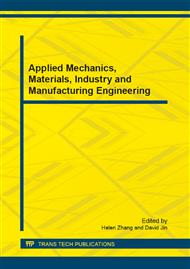p.272
p.276
p.280
p.284
p.289
p.293
p.297
p.302
p.306
Feasibility of Reutilizing Municipal Solid Waste Incineration Residues as Construction Materials
Abstract:
Abstract: The presented study mainly focused on investigating detailed engineering properties of municipal solid waste incineration residues as road construction materials with different application classes. Also, the leachability of heavy metals and salts in the residues as a function of the ratio of liquid and solid was tested. The Chinese specifications about road construction materials were employed to evaluate the application capacity of the waste incineration residues. The obtained results indicate that bottom ash basically complies with the technical requirements for road base and sub-base materials with exception of the low compataclity and high organic content of the fine fraction. The toxicity test showed that bottom ash can satisfy the limit values of heavy metals and salts that was established by Chinese specification for hazard solid waste. For the application of the ash in road base, it should be mixed with other materials to improve the compataclity. Pretreatment of fine fraction of bottom ash to remove organic matter is necessary.
Info:
Periodical:
Pages:
289-292
Citation:
Online since:
April 2012
Authors:
Price:
Сopyright:
© 2012 Trans Tech Publications Ltd. All Rights Reserved
Share:
Citation:


